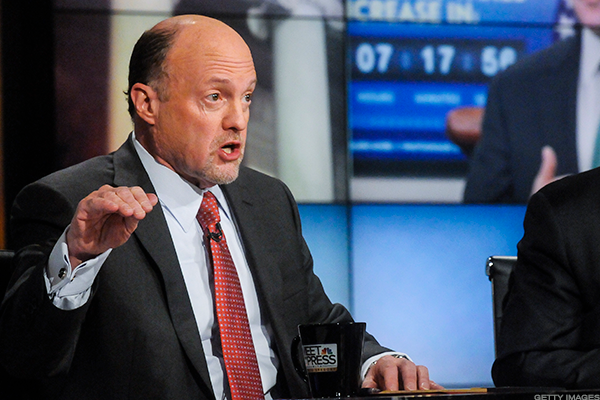
There have only been four times in Jim Cramer’s career when the stock guru and former hedge fund manager sold out of his entire portfolio. And, scary as it sounds, the market action of the past few weeks reminds him of those chaotic moments.
“As much as it pains me to say this, the current situation combines … some of the worst characteristics of those four past breakdowns,” Cramer told investors on Monday as much of the stock market slid into correction territory.
First was the crash of October 1987, a one-day mechanical nosedive that became known as Black Monday. Back then, newly minted S&P 500 futures and insurance instruments that claimed to stem portfolio losses using the futures combined to cause a disastrous bout of selling.
“It was portfolio insurance back then; now it’s algorithms and ETFs,” the host of CNBC’s “Mad Money” said. “They’re like machine guns mowing down any buyers, like we saw today.”
In 1998, Cramer watched as a major hedge fund with huge holdings in the market started pulling out of stocks and threatening the fate of many big banks. He remembers anticipating “a total collapse” and writing a piece telling investors to get out of the market.
Two hours later, then-Federal Reserve Chairman Alan Greenspan announced an emergency interest rate cut that provided the necessary liquidity to get the stock market back on its feet. Cramer said it was the worst professional mistake he ever made, but hoped that today’s Fed would have the same resolve.
The March 2000 crash was a brutal one for investors, but had a “negligible” effect on the economy, the “Mad Money” host recalled. The Nasdaq index had been rallying since 1998, but reached a point where scores of companies were overvalued and there were few buyers to be found.
“The dotcom bomb in 2000 … went off because of reckless underwriting,” Cramer said. “The economy was robust, but the bankers flooded the market with too many low-quality internet IPOs and secondary offerings, then the whole thing collapsed under its own weight.”
Last but not least was the start of the financial crisis in 2008. Cramer’s sources in the business world were signaling that the economy could be on the brink of decline, but the Fed didn’t listen, spurring his famed “They know nothing” rant.
“Right now, the stock market is signaling that the economy’s in for pretty rapid deterioration, just like 2008. We have a Fed that’s lamentably unaware of the danger,” he warned. “Fortunately, there’s no systemic risk here — we’re looking at a normal cyclical downturn, though, linked with some 1987-style overvaluations.”
But “the Fed is making the same mistakes as in 2007. They are. They’re totally misjudging how weak some major parts of the economy are,” he warned. “If the Fed doesn’t reverse course like it did in ’98, then we could continue along … a 1987 road, especially if the president keeps slapping tariffs on the Chinese.”
And despite the pressure President Donald Trump is putting on the traditionally independent Fed to slow their interest rate hikes, Cramer said the burden of preventing economic pain is on the central bank and its leaders.
“My main fear is that we could have a mini version of 2008 if the Fed doesn’t change course,” the “Mad Money” host said. “Our one hope? If Fed chief Jerome Powell actually starts listening to the stock market and wakes up to the damage that tariffs can do to the economy, then maybe he’ll shift gears, just like Greenspan did in ’98. Then we can bottom and even roar higher. But as long as Powell stays committed to the December hike and three more next year, … and the president stays committed to expanding his tariffs, then history says we’ve got more downside no matter what.”
























